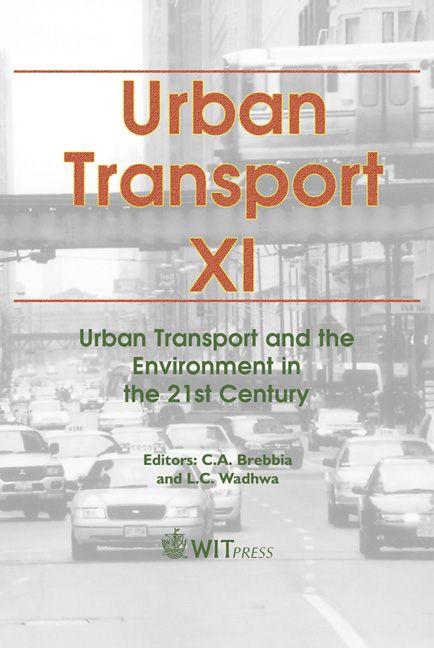Analysis Of User Impressions Of Railway Stations, Focusing On The Effects Of Adjunct Retail Facilities
Price
Free (open access)
Transaction
Volume
77
Pages
10
Published
2005
Size
486 kb
Paper DOI
10.2495/UT050821
Copyright
WIT Press
Author(s)
C. Li, T. Yamamoto & T. Morikawa
Abstract
This paper examines the cognitive structure of the impressions that users have of railway stations and quantifies the effect of different types of adjunct stores on the cognitive structure. The results offer some fundamental insights for developing more effective policies and promotion strategies. User feelings of Tokyo’s large railway terminals were gathered by means of a questionnaire. Overall impressions of the stations were then extracted using factor analysis. A structural equation model (SEM) was applied to see how stores affect the user’s impressions of the stations as well as to quantify the impact of the stores and the differences in the users’ socio-economic characteristics. The results suggest that railway users have three types of impressions about stations: convenience, when a station is mainly considered a transport facility; pleasure, when a station is mainly considered a place of communication or leisure; and crowded, which concerns the station’s layout and atmosphere. Different types of stores produced different impressions. Clothing stores enhanced the impression of pleasure, while food & beverage stores enhanced the impression of convenience. The revealed shopping behaviour data confirmed that these latent variables affect the railway user’s choice of shopping destinations. Keywords: urban renaissance, railway stations, cognitive structure of impression, adjunct retail facilities. 1 Introduction Urban sprawl is a serious problem in the metropolises of Japan and other developed countries. Countries undergoing rapid development will also face this
Keywords
urban renaissance, railway stations, cognitive structure of impression, adjunct retail facilities.





